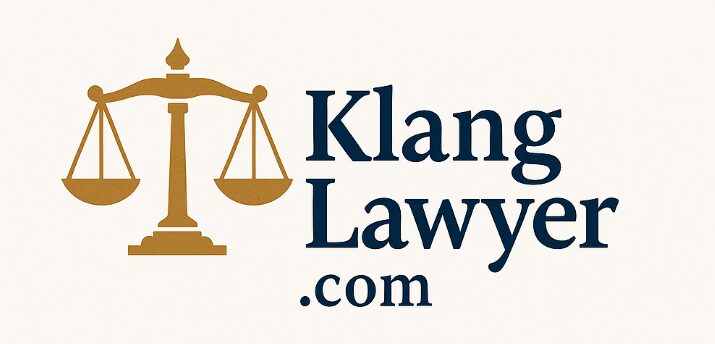Drafting a legal partnership agreement in Malaysia is imperative for protecting your business interests and ensuring smooth operations among partners. This vital document outlines each partner’s responsibilities, profit-sharing arrangements, and the process for resolving disputes. By following the right steps, you can create a comprehensive agreement that minimizes potential conflicts and establishes a solid foundation for your partnership. In this guide, you will learn the important elements to include and best practices to follow, allowing you to safeguard your partnership’s future while fostering a mutually beneficial relationship.
Key Takeaways:
- Define the partnership structure, including the types of partnerships applicable under Malaysian law, such as general partnerships and limited partnerships.
- Clearly outline each partner’s contributions, including financial investments, assets, intellectual property, and any other resources provided to the partnership.
- Establish decision-making processes, clarifying how decisions will be made, including voting rights and the process for resolving disputes among partners.
- Detail the profit and loss distribution, specifying how profits and losses will be shared among partners based on their contributions or agreed-upon formulas.
- Include provisions for withdrawal or termination, addressing how partners can exit the partnership and what steps must be taken to dissolve the business if necessary.
- Ensure compliance with local regulations, considering the registration requirements, legal obligations, and taxation issues relevant to partnerships in Malaysia.
- Consult legal professionals to conduct a thorough review of the partnership agreement, ensuring that it adheres to Malaysian law and effectively covers all critical aspects of the partnership.
Understanding Partnership Agreements
Your partnership agreement serves as a foundational document that outlines the rights, responsibilities, and processes associated with a business collaboration in Malaysia. It sets clear expectations and helps prevent conflicts among partners by providing guidelines for decision-making and profit sharing. A well-drafted agreement ensures that all parties are on the same page, ultimately contributing to the stability and success of your partnership.
Definition and Importance
Clearly, a partnership agreement is a legally binding document that defines each partner’s rights and obligations. It outlines the structure of the partnership, including profit distribution, decision-making processes, and partner roles. The importance of having this agreement cannot be overstated, as it serves as a safeguard against potential disputes while providing a clear framework for your business operations.
Types of Partnerships in Malaysia
Clearly, there are several types of partnerships in Malaysia, each with unique features tailored to different business needs. Here are the primary types:
| General Partnership | All partners share liabilities and are jointly responsible for debts. |
| Limited Partnership | Includes both general and limited partners; limited partners have restricted liability. |
| Limited Liability Partnership (LLP) | Combines flexibility of a partnership with the limited liability of a company. |
| Joint Venture | A collaboration between two or more businesses for a specific project. |
| Professional Partnership | Formed by professionals like lawyers or doctors; often regulated by professional bodies. |
Malaysia offers a diverse array of partnership structures to suit your specific business goals. Each type has distinct liabilities, regulatory requirements, and operational frameworks, which can significantly influence your business setup. Understanding these options allows you to make informed decisions that align with your vision and risk tolerance. After reviewing these types, you can choose a structure that best fits your business model.
- General Partnership is straightforward but comes with full liability.
- Limited Partnership provides options for partners with limited liability.
- Limited Liability Partnership (LLP) protects personal assets while allowing flexibility.
- Joint Venture focuses on specific projects, promoting collaboration among entities.
- Professional Partnership caters specifically to regulated professions.
After outlining these types of partnerships, it’s important to evaluate which structure aligns with your business needs, as the right choice can play a significant role in your overall success in the Malaysian market.

Key Factors to Consider
Assuming you are drafting a legal partnership agreement in Malaysia, there are several key factors to consider to ensure a comprehensive document. Pay attention to the following:
- Partnership structure
- Roles and responsibilities
- Profit and loss sharing
- Dispute resolution
- Termination provisions
After ensuring these elements are well addressed, your partnership agreement will be stronger and more effective.
Partnership Structure
Clearly defining the partnership structure is necessary for outlining how the business will operate. You might consider whether it will be a general partnership, limited partnership, or limited liability partnership, as each type has different legal implications and requirements. Clarity on this aspect facilitates smoother operations and compliance with Malaysian laws.
Roles and Responsibilities
There’s a need to clearly outline the roles and responsibilities of each partner in the agreement. This ensures that all parties understand their obligations and duties within the partnership.
Partnership clarity is key when defining each member’s contributions and duties. Each partner should have a designated role, which can include financial management, operations oversight, and client relations. This division of labor helps to minimize confusion and overlaps, ultimately strengthening the partnership’s operations. Furthermore, addressing these aspects reduces the risk of miscommunication and potential disputes, thus fostering a productive business environment.

Essential Components of a Partnership Agreement
Keep in mind that a comprehensive partnership agreement should clearly outline the responsibilities and expectations of each partner. Essential components include governance structure, capital contributions, profit and loss distribution, and dispute resolution mechanisms. For a well-structured agreement, you can refer to a Partnership Contract Template for Malaysia to guide you in drafting your document effectively.
Capital Contributions
Any partnership agreement should clearly define each partner’s capital contributions. This may include cash, property, or services contributed to the business, ensuring everyone is on the same page regarding their financial commitments and ownership stakes.
Profit and Loss Distribution
Distribution of profits and losses must be explicitly detailed in your partnership agreement. This ensures that each partner understands their share in both gains and setbacks, promoting transparency and reducing conflicts. You should specify the method of distribution, whether equally or based on each partner’s capital contribution.
Losses can have a significant impact on your partnership. If not clearly defined, you may face disputes regarding how losses are shared among partners. For example, if one partner has invested more capital, they might expect a lesser share of the losses. It’s vital to outline these details in your agreement to protect your interests and foster a cooperative atmosphere, ensuring that all partners are aware of their responsibilities in case of any financial downsides.
Drafting Tips for a Legal Partnership Agreement
To create a solid legal partnership agreement, consider these drafting tips:
- Clearly define the roles and responsibilities of each partner.
- Include a detailed profit-sharing arrangement.
- Specify the duration of the partnership.
- Outline the procedure for resolving disputes.
- Ensure compliance with local laws.
Knowing these tips will help you craft a comprehensive document. For more insights, check out Partnership Agreements in Malaysia: A Comprehensive Guide.
Clarity and Precision
There’s no room for ambiguity in your partnership agreement. Ensure that each term is clearly defined and that the language used is precise. This will minimize the risk of misunderstandings and disputes in the future.
Seeking Legal Advice
While drafting your partnership agreement, it’s advisable to seek legal advice. Engaging a legal professional can help you to navigate complex regulations and offer insights specific to your business needs. Without proper legal guidance, you might overlook significant details, leading to potential misunderstandings among partners.
Advice from a legal expert can make a difference in safeguarding your business. They can identify potential pitfalls in your drafting, ensure compliance with local laws, and clarify your rights and obligations. This support can ultimately contribute to a harmonious partnership and facilitate business growth.

Common Mistakes to Avoid
All too often, partnerships falter due to avoidable errors in their legal agreements. Insufficient attention to detail or overlooking imperative elements can lead to misunderstandings and conflicts. By recognizing and addressing these common pitfalls, you can create a robust partnership agreement that safeguards your interests and fosters a healthy business relationship.
Underestimating Legal Implications
Common mistakes arise when you overlook the legal implications of your partnership agreement. Many partners mistakenly assume that a verbal agreement suffices, leading to potential disputes. Always ensure you fully understand the legal responsibilities and liabilities involved in your partnership to avoid significant issues in the future.
Neglecting Dispute Resolution Provisions
Even when drafting a partnership agreement, many entrepreneurs fail to include dispute resolution provisions. Without these clauses, you risk escalating conflicts that can damage your business relationships. It’s imperative to outline how disputes will be resolved—through mediation, arbitration, or litigation—to ensure that you have structured processes in place.
This is vital as having clear dispute resolution provisions not only minimizes tension but also fosters a sense of trust among partners. By agreeing in advance on how to handle disagreements, you can avoid lengthy and costly legal battles. Ensure your agreement specifies the steps to take during a conflict, such as setting timelines for resolution and identifying a neutral third-party mediator. In doing so, you create a positive framework for partnership longevity.
Reviewing and Finalizing the Agreement
After drafting your legal partnership agreement, it’s necessary to conduct a thorough review. This ensures that all provisions are clear, comply with Malaysian law, and accurately reflect the intentions of all partners involved. Consider involving a legal professional to help identify potential issues or ambiguities before finalizing the document.
Importance of Revisions
Any revisions made during the review process can significantly impact the effectiveness of your agreement. Pursuing these changes is vital to ensure that your partnership is well-defined and that all parties have a clear understanding of their rights and obligations, minimizing potential disputes in the future.
Finalizing Signatures and Documentation
Some key elements include obtaining signatures from all partners and ensuring that copies are securely stored. Additionally, proper documentation, such as witness statements or notarization, enhances the legitimacy of your agreement and serves as vital evidence in case of future disputes.
Understanding the importance of finalizing signatures and required documentation streamlines your partnership’s legal standing. You should ensure that all designated signatories are present when the agreement is signed to validate its authenticity. With all signatures collected, promptly store the agreement in a safe location, and consider creating multiple copies for each partner. This process not only reinforces your partnership’s legal framework but also shows a unified commitment among partners, setting a positive tone for your business relationship.
Final Words
Taking this into account, drafting a legal partnership agreement in Malaysia requires careful consideration of various elements such as the roles of each partner, profit sharing, and dispute resolution mechanisms. You should ensure that the agreement complies with local laws and accurately reflects your intentions and agreements. Consulting with a legal professional can help you navigate the complexities of partnership law, safeguarding your interests and laying a solid foundation for your business relationship. With diligence and attention to detail, you can create a partnership agreement that supports your shared goals.
FAQ
Q: What is a Legal Partnership Agreement?
A: A Legal Partnership Agreement is a formal document that outlines the terms and conditions of a partnership between two or more parties in Malaysia. It defines the roles and responsibilities of each partner, profit-sharing ratios, contributions, and procedures for resolving disputes.
Q: What are the key components to include in a Partnership Agreement?
A: A well-drafted Partnership Agreement in Malaysia should include components such as the names of the partners, business name, purpose of the partnership, duration of the partnership, capital contributions, profit and loss distribution, management responsibilities, dispute resolution methods, and procedures for adding or removing partners.
Q: Do I need a lawyer to draft my Partnership Agreement?
A: While it is possible to create a Partnership Agreement independently, consulting a lawyer specialized in commercial law can help ensure that the agreement complies with Malaysian legal requirements and adequately protects the partners’ interests.
Q: How is profit and loss shared among partners in the agreement?
A: The Partnership Agreement should specify how profits and losses will be distributed among the partners. This can be based on the percentage of capital contributions or can be divided equally among partners. Clear guidelines will minimize misunderstandings in the future.
Q: What steps should be taken to modify an existing Partnership Agreement?
A: To modify an existing Partnership Agreement, the partners should agree on the proposed changes and document them in writing. All partners must sign the amended agreement. It’s also recommended to seek legal advice to ensure compliance with applicable laws.
Q: What should I do if one of the partners wants to leave the partnership?
A: The Partnership Agreement should outline the procedure for a partner’s exit, including how the departing partner’s share will be valued and paid. If no such provisions exist, the partners should negotiate terms while considering the partnership’s financial health and obligations.
Q: Are there any legal regulations I should be aware of while drafting a Partnership Agreement in Malaysia?
A: Yes, in Malaysia, partnerships must comply with the Partnership Act 1961, which governs the formation and operation of partnerships. It’s imperative to ensure that the agreement aligns with this act and any other relevant local laws to ensure enforceability.
